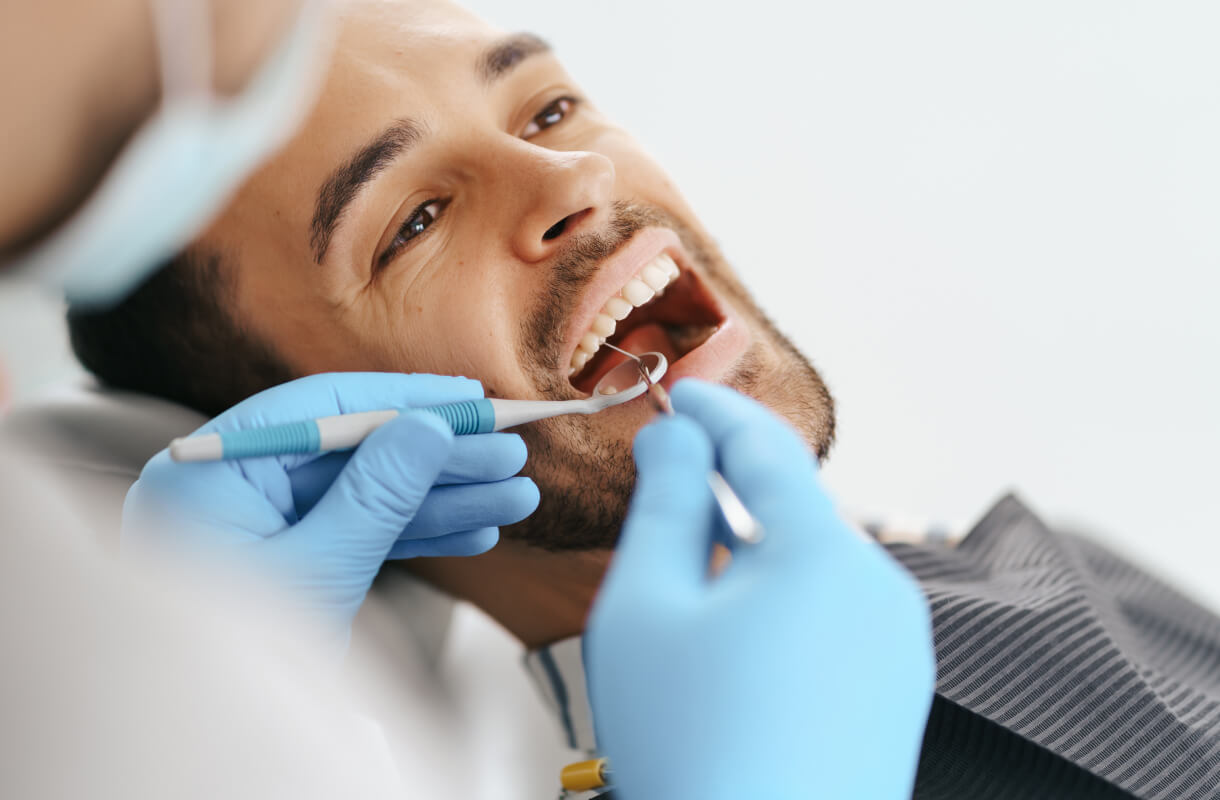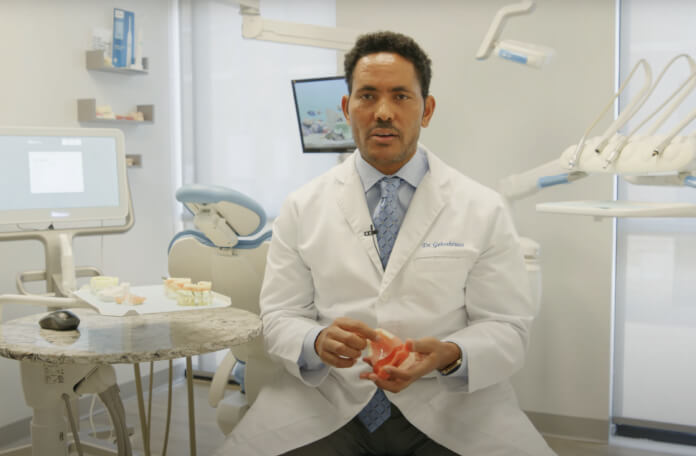Find Your Perfect Dental Implant Treatment
Due to recent advances in dental technology, subperiosteal dental implants are rarely used. However, at one time, they revolutionized the world of implant dentistry for those with jawbone conditions.
If you’re ready to explore your dental implant options in Wylie, TX, contact our dentist by calling (214) 702-0446! Dr. G offers All-on-4 dental implants, single-tooth implants, and more!

What Are Subperiosteal Dental Implants?
Subperiosteal dental implants are a type of dental implant placed on or above the jawbone but beneath the gum tissue. Unlike traditional endosteal implants, which are inserted into the jawbone, subperiosteal implants sit on top of the bone. This makes them an ideal option for patients who do not have sufficient bone height or density to support endosteal implants and are not candidates for bone grafting.
These artificial teeth can be fixed or removable, depending on the patient’s needs or preferences.
How Do Subperiosteal Dental Implants Work?
The structure of subperiosteal implants consists of a metal framework custom-fitted to the patient’s jawbone. This framework includes posts that protrude through the gum to hold the prosthetic teeth. Over time, the gum tissue heals around the framework, securing it in place.

Why Subperiosteal Implants Are Rarely Used Today
Despite the advantages of subperiosteal implants, they’re rarely used today compared to traditional endosteal implants or even zygomatic implants. The main reason is the advancements in bone grafting procedures, which have made it possible for patients with insufficient jawbone density to undergo a bone grafting procedure and receive a traditional endosteal implant.
Also, a subperiosteal implant requires a metal frame to be anchored to the jawbone, which can sometimes cause discomfort and make it difficult to clean the implant effectively. This can increase the risk of infection and may lead to implant failure over time.
In addition, subperiosteal implants are generally more complex and time-consuming to place compared to endosteal implants and require a higher level of expertise and skill from the dentist. As a result, not all dentists are trained to place subperiosteal implants, and patients may need to travel to a specialist center to receive this implant.
In recent years, advancements in dental implant technology have resulted in the development of alternative implant treatments that are less invasive and provide similar benefits to subperiosteal implants. These new implant systems are now widely available and are often a preferred option for patients who require dental implant treatment.
Treatments Replacing Subperiosteal Implants
With advancements in technology and dental implant techniques, subperiosteal implants are rarely used. Instead, dentists usually offer one or more of these implant treatments:
- Endosteal Implants
- Zygomatic Implants
- All-On-4 Implants
- Mini Dental Implants
To find out more about dental implant treatments near you, contact our Wylie dentist. If dental implants aren’t right for you, other tooth replacements you may consider include dental bridges or removable dentures.
Subperiosteal Implant Advantages
There are several advantages to subperiosteal implants, including:
- No Bone Grafting Required: Subperiosteal implants don’t require bone grafting procedures before placement, making the process quicker and less invasive.
- Suitable for Patients With Insufficient Jawbone Density: These dental implants work well for patients with insufficient jawbone density who may not be candidates for traditional endosteal dental implants.
- Stable and Durable: They’re anchored to the jawbone using small posts, providing a stable and durable foundation for replacement teeth.
- Customizable: These implants can be custom-made and attached to the patient’s jaw, ensuring a comfortable and natural-looking fit.
- Versatile: Subperiosteal implants can be used to replace one or multiple missing teeth or support a full arch restoration or full mouth rehabilitation.
- Easy to Clean and Maintain: They can be cleaned just like natural teeth, making it easy for patients to maintain good oral hygiene.
Disadvantages of Subperiosteal Implants
Subperiosteal implants are placed under the gum tissue and on or above the bone. While they can be a suitable option for some patients, there are several disadvantages associated with this type of implant:
- Invasive Surgery: The procedure for a subperiosteal implant is more invasive than other types of implants, such as endosteal implants. This can result in more pain, an increased risk of complications, and a longer recovery time for patients.
- Risk of Infection: Since the implant is placed under the gum tissue, there’s a higher risk of infection. This can be especially problematic if the implant becomes loose or shifts, as it can create a pocket where bacteria can accumulate.
- Limited Placement: Subperiosteal implants are not suitable for all patients. They’re typically only used in cases where there’s not enough bone to support the implant. However, even in these cases, not all patients are good candidates for a subperiosteal implant.
- Cost: Subperiosteal implants can be more expensive than other types, as they require more complex surgical procedures and custom fabrication.
- Limited Long-Term Data: While subperiosteal implants have been used for many years, there’s still limited long-term data on their effectiveness and longevity. This means that it may be difficult to predict how well they will perform over time.

Frequently Asked Questions
On average, a subperiosteal implant can last for about 10 to 15 years. However, the lifespan of a subperiosteal dental implant can vary depending on several factors such as the patient’s oral health, the quality of the implant, and the expertise of the implant dentist who performs the procedure.
The implant placement surgery can be a bit uncomfortable, but with the use of local anesthesia, the procedure should not be painful. After the procedure, patients may experience some discomfort and swelling, which can be managed with pain medication and ice packs.
Subperiosteal implants require the same care and maintenance as natural teeth, including regular brushing, flossing, and visits to your dentist twice a year for checkups and cleanings. It’s important to maintain good oral hygiene to prevent any infection from occurring and ensure the longevity of the implant.
Subperiosteal dental implants are not intended to be removable. Since the implant fuses with the jawbone over time, patients should not try to remove their dental restoration. If you’re having issues or complications with your subperiosteal implant, contact your dentist for treatment.
Schedule Your Dental Implant Consultation with Dr. G!
Don’t put off replacing your missing teeth any longer. With various dental implant treatments available today, our Wylie dentist is sure to have what you need and will create a custom treatment plan based on your smile goals. To schedule your dental implant consultation, contact our Wylie, TX, dental office today by calling(214) 702-0446.